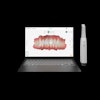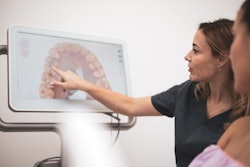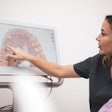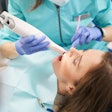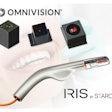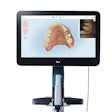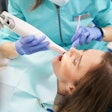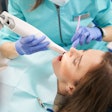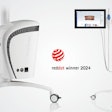When scanning removable complete dentures (RCDs), the Trios 5 intraoral scanner (IOS) may be much more accurate than other scanners, according to a published study in the Journal of Prosthetic Dentistry.
Additionally, the i900 and Primescan systems may show differing levels of performance depending on the conditions, the authors wrote.
“The accuracy of intraoral scanners varied when extraorally scanning RCDs including all surfaces,” wrote the authors, led by Soyeong Jeon of the Yonsei University College of Dentistry in the Republic of Korea (J Prosthet Dent, November 9, 2025).
The in vitro study aimed to evaluate the trueness and precision of extraoral digital scans of RCDs with or without a metal base using three IOSs. Three RCD types were fabricated, including maxillary resin-based (MxR), mandibular resin-based (MnR), and maxillary metal-based (MxM) dentures. Each denture was first scanned using an industrial scanner to obtain reference data, they wrote.
The dentures were then scanned with three IOSs: the Trios 5, the i900, and the Primescan, 10 times each, resulting in 90 total stereolithography (STL) files. Trueness and precision were analyzed by comparing IOS scans to reference data using alignment methods and statistical measures, including mean absolute deviation (mAD), root mean square deviation (RMSD), standard deviation (SD) of mADs (SDmAD), and SD of the means of original deviations (SDmOD).
In the MxR group, the Trios 5 showed significantly higher trueness than the others (p < 0.001). For the MxM group, mAD analysis revealed no significant difference (p = 0.532), but RMSD results indicated that the i900 had better trueness than the Primescan scanner (p = 0.002). In the MnR group, mAD differences were not significant (p = 0.289), while RMSD analysis showed the Trios 5 outperformed Primescan (p < 0.001), they wrote.
Regarding precision, the Trios 5 had a significantly lower SDmAD than the i900 in the MxR group (p < 0.001), though SDmOD differences were not significant (p = 0.055). In the MnR group, SDmAD differences were insignificant (p = 0.094), but SDmOD showed the Trios 5 had greater precision than the i900 (p = 0.007) and the Primescan (p = 0.005).
The study, however, had limitations. It did not consider differences in denture size or shape, and it tested only one resin type, which limited how broadly the results could be applied to other materials or clinical situations, the authors added.
“The TRIOS 5 system exhibited superior or comparable performance in both trueness and precision compared with the i900 and Primescan systems across all tested conditions,” the authors concluded.




